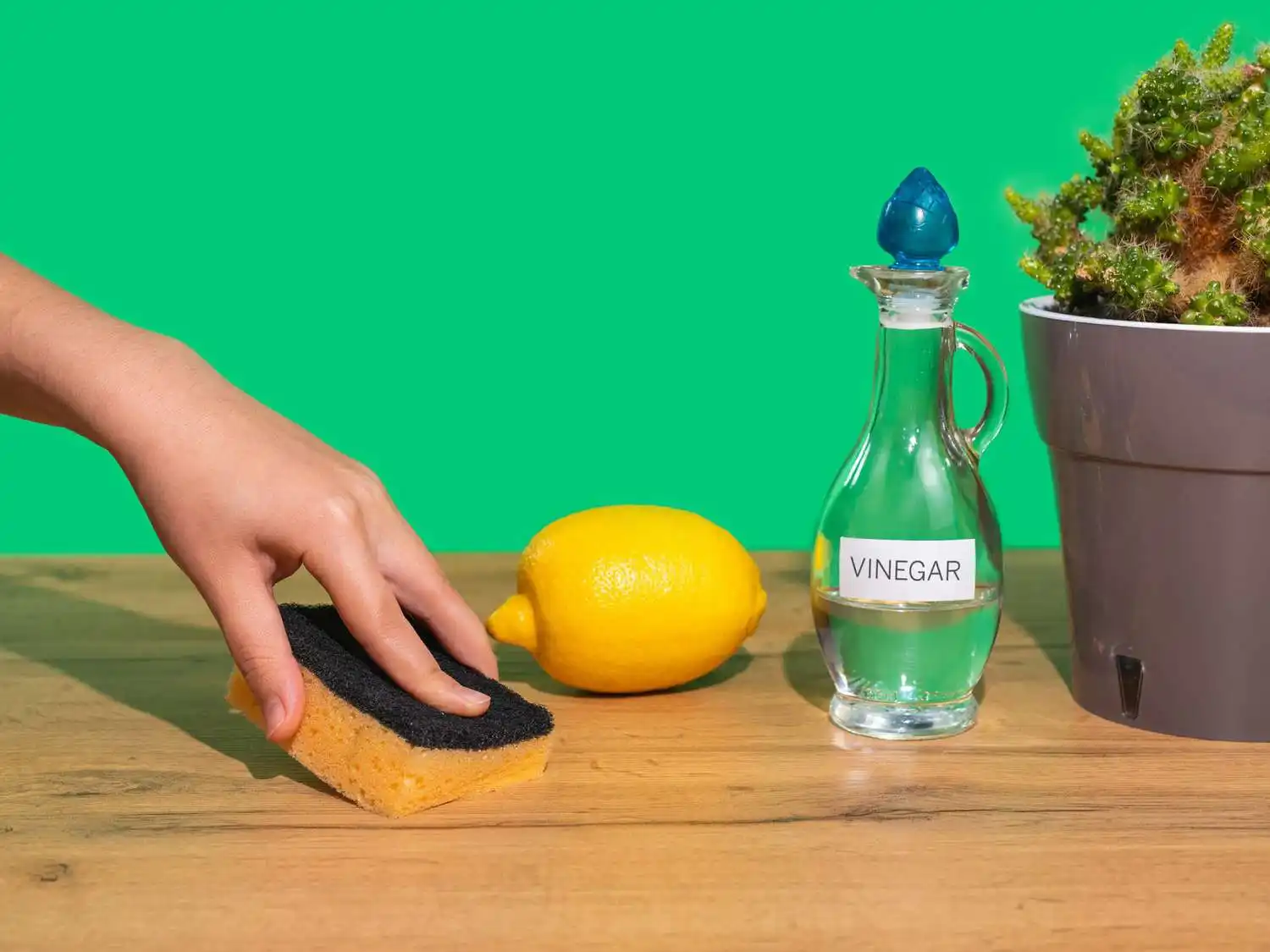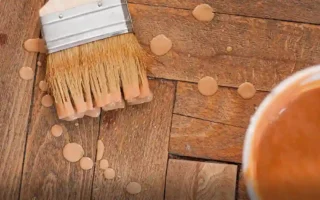Vinegar is a practical and eco-friendly solution for removing paint from wood. It’s easily available, non-toxic, and inexpensive compared to many commercial products. This natural cleaner helps lift stubborn paint and minimizes the harmful effects of traditional paint removers.
Vinegar can be an effective option for refinishing furniture or restoring old wooden surfaces. By understanding how it works and following proper techniques, you can achieve satisfying results without compromising your health or the environment.
How vinegar works as a natural cleaner and solvent

The power of vinegar when it comes to cleaning naturally cannot be overstated. Its main ingredient, acetic acid, provides remarkable solvent properties that can break down stubborn substances like paint.
When applied to paint residue, vinegar penetrates the layers and loosens their grip on the wood surface. This process makes scraping off old or unwanted paint easier without harsh chemicals.
Being biodegradable adds another feather in its cap. You don’t have to worry about harmful toxins lingering in your home or affecting the environment.
Vinegar is gentle enough for most wooden surfaces. It won’t strip away finishes or damage the wood fibers if used correctly.
Types of wood surfaces and paints that can be removed with vinegar
Vinegar is surprisingly versatile when it comes to paint removal. It works well on various wood surfaces, from hardwood floors to furniture and cabinetry.
Softwoods like pine or cedar can significantly benefit from vinegar’s gentle yet effective properties. Vinegar’s acidic nature helps lift the paint without damaging the wood underneath.
When it comes to paint types, latex and water-based paints respond especially well. Vinegar penetrates these layers easily, softening them for easier scraping.
Oil-based paints require more effort, but vinegar can help break stubborn bonds.
Vinegar allows for careful application without harsh chemicals that could harm fine features, making it ideal for intricate wooden details or carvings.
Materials needed for the process

Gather a few essential materials to remove paint from wood using vinegar. First, you’ll need white distilled vinegar, the most effective type for this task.
Next, have some clean rags or clothes on hand. These will help apply the vinegar and wipe away any loosened paint.
A plastic scraper is useful, too. It can gently lift off the softened paint without damaging the wood surface underneath.
Wear gloves while working with vinegar and paint residues to protect your hands from irritation.
Step-by-step guide on how to use vinegar to remove paint from wood
Start by gathering your materials. You’ll need white vinegar, a small bowl, a paintbrush or sponge, and some clean rags.
Pour the vinegar into the bowl. To make it more effective, heat it in the microwave for about 30 seconds. Be careful; it should be warm but not boiling.
Using your brush or sponge, apply the heated vinegar directly to the painted area of the wood. Let it soak for 10 to 15 minutes, which will help loosen the paint.
Next, grab a clean rag and gently scrape at the paint’s edges. The combination of heat and acidity should allow you to peel off layers easily.
Continue applying more vinegar as needed until most or all of the paint is removed. Afterward, wipe down with a damp cloth to remove any residue left behind from both paint and vinegar.
Safety precautions when working with vinegar and paint
Safety should always come first when working with vinegar and paint. Even though vinegar is a natural product, handling it carefully is essential.
Protect your hands from irritation by wearing gloves. Vinegar can be acidic, which may cause discomfort if it comes into contact with your skin for an extended period.
Ensure the area is well-ventilated. Open windows or use fans to circulate air while you work. This prevents the buildup of fumes that could irritate your lungs.
Keep children and pets away from the workspace. They might inadvertently ingest materials or disrupt your process.
Store any leftover vinegar in a safe place where spills are unlikely. Proper storage prevents accidents and maintains its effectiveness for future use.
Alternative methods for removing paint from wood
If vinegar isn’t your go-to, several other methods exist. Heat guns can effectively strip paint from wood surfaces without harsh chemicals. Paint is softened by these chemicals, making scraping easier.
Another popular option is using a commercial paint stripper. These products are designed specifically for this purpose and often require less effort than natural solutions. Just follow the manufacturer’s instructions carefully.
For those seeking an eco-friendly approach, baking soda mixed with water can also do wonders when heated. It helps loosen the bond between paint and wood.
Sanding remains a tried-and-true technique. Although it may require more physical effort, it provides a smooth finish if done correctly. Each method has its own advantages—choose one that best fits your project needs!




